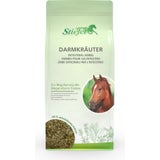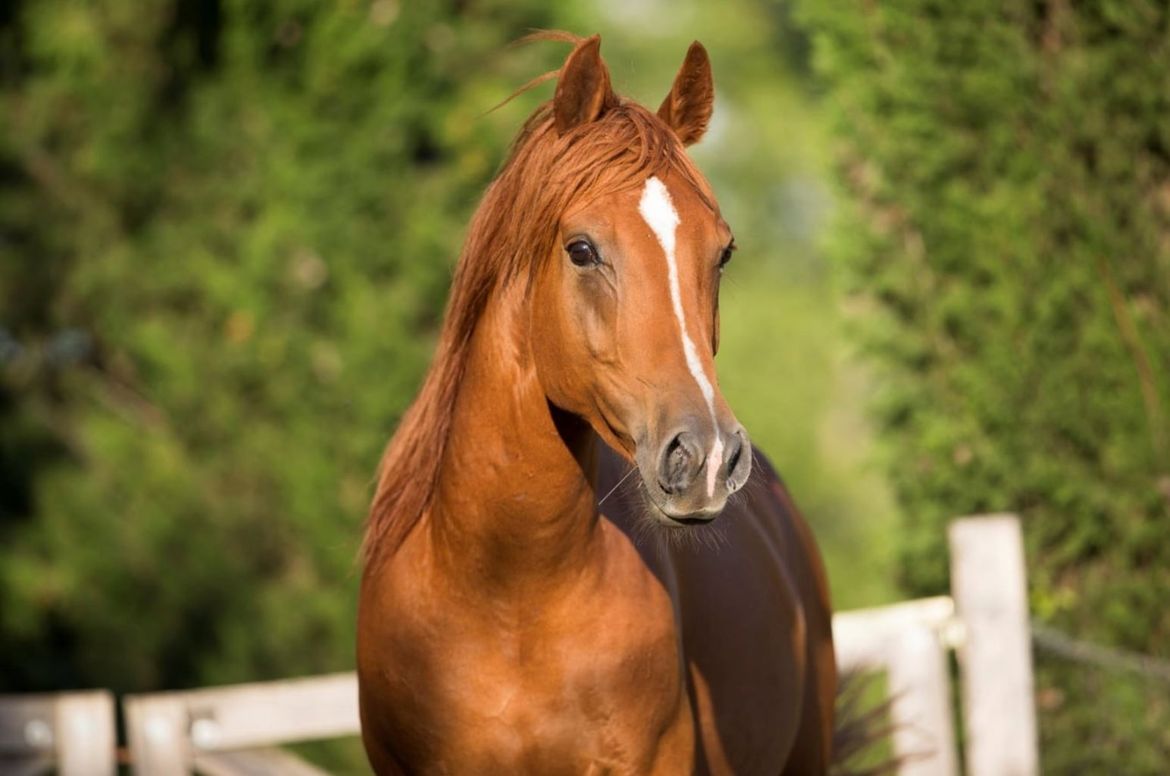Faecal Water
What is faecal water?
A horse with faecal water symptoms excretes brownish water from the intestine shortly before or after horse droppings, sometimes completely independently of this. The consistency of the horse droppings is inconspicuous in most horses suffering from faecal water.
The tail and hind legs of affected horses are often stuck together, as the water simply runs out in an uncontrolled manner and contaminates the inside of the thighs. This can be very uncomfortable for the horse, as the skin is constantly irritated, moist and, in the worst case, inflamed.
In some horses, the faecal water sprays out of the anus in a high arc. The amount can be up to one litre.
In a healthy horse, in the last part of the intestine, the large intestine, the water is withdrawn from the food pulp and transported back into the body together with minerals and trace elements. This process is disturbed in an affected horse.
What are the causes of faecal water?
Faecal water is a symptom of illness with very different clinical diagnoses.
The formation of faecal water is always based on a digestive disorder. The challenge in treating faecal water is to find the root cause of this digestive disorder.
The causes can be, for example:
- Dental problem
- Severe worm infestation
- Bacterial overgrowth in the colon
- Acidic intestinal environment
- Incorrect feeding
- Fungal attack or mould in the hay
- Stress from moving, transport or training
Often one can quickly remedy the issue through optimised feeding. This is sometimes necessary to shorten the course and to give the horse relief.
However, it is also important to get to the bottom of the root cause - if this is not the feeding itself - in order to avoid long-term consequential damage.
How can I support my horse?
You should try to observe your horse as neutrally as possible and, above all, holistically. Is there any obvious stress? For example with trailer trips or during training or in herding? Or are there other stress factors that you don't see at first glance? You should also look at the chewing behaviour and have the teeth checked by a horse dentist. Misaligned teeth can lead to the fact that the feed (especially roughage) can no longer be sufficiently chopped up, which leads to a chain of imbalances in the digestive process. The raw fibre from roughage has a very important function in the digestive process in the large intestine. Good bacteria are nourished by raw fiber and are responsible for other important metabolic functions.
Correct feeding as a basis
In the case of an affected horse, you should take a close look at the roughage and ensure that it is of very good quality in sufficient quantities. Haylage is not particularly suitable as a substitute for hay in such horses, as feeding haylage can cause the intestines to become acidic, which in turn favours the colonisation of disease-causing bacteria.
If the hay quality is not sufficient, you can improve the basis for the good bacteria (probiotics) with molasses-free beet wedges or alfalfa with high-quality raw fibre content. In addition, you should refrain from feeding the affected horses with sugar, as well as apples and carrots, as well as grain (high starch content), as the disease-causing bacteria are nourished and strengthened by sugar and starch.
In addition, the basis of life for the good bacteria (probiotics) can be further improved by adding prebiotic additives to the feed. Prebiotics are "food" for the probiotics. Live yeast, for example, is prebiotic, like Stiefel Intestin. There are also herbs that have a prebiotic effect, such as liquorice root.
You can also stimulate enzymatic digestion by feeding bitter substances. These can be found in many herbs that the horse would eat in the wild. A suitable herbal mixture for this is the herbal mixture Gastrophyt from Stiefel. We recommend short feeding in the acute stage over a period of 6 weeks.
In order to support the stomach and intestinal mucous membranes and to make them more efficient, feeding linseed in the form of ready-to-feed linseed cake as pellets (Stiefel linseed pellet) or granules (Stiefel linseed granules). The linseed has mucus-forming properties that protect the intestinal walls and soothe them.
THE ACUTE AID SECRET TIP:
Stiefel Psyllium Husks
Psyllium husks should always be soaked before feeding, as they bind a lot of water and this can lead to blockages. However, after consultation with the veterinarian, they are also used as acute assistance in the case of faecal water in order to avoid these potentially agonising attacks. This allows the damaged skin on the anus and hind legs to recover quickly. In addition, psyllium husks also have mucus-forming properties that can have a beneficial effect on the intestinal walls and the gastric mucosa.
Related products
-
 5.0 (11)
5.0 (11)Stiefel Intestinal Herbs, 1 kg
Bestseller- 100% natural herbal mixture
- For digestive problems
- To regulate the gastrointestinal tract
£21.92 (£21.92 / kg)Delivery by December 23
-
Great Britain: Free standard delivery from £79.90
-
Free
returns Secure payments
with SSL encryption technology

